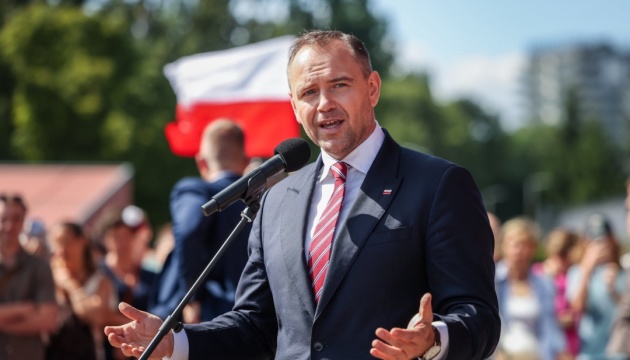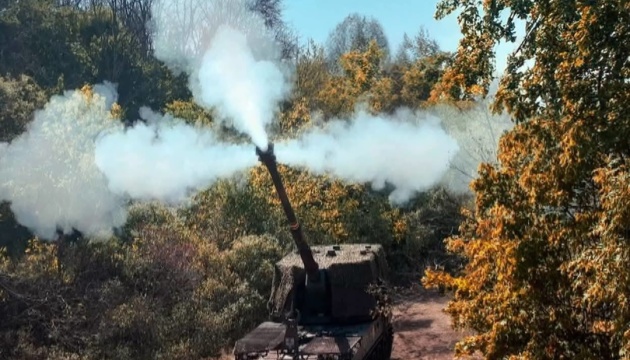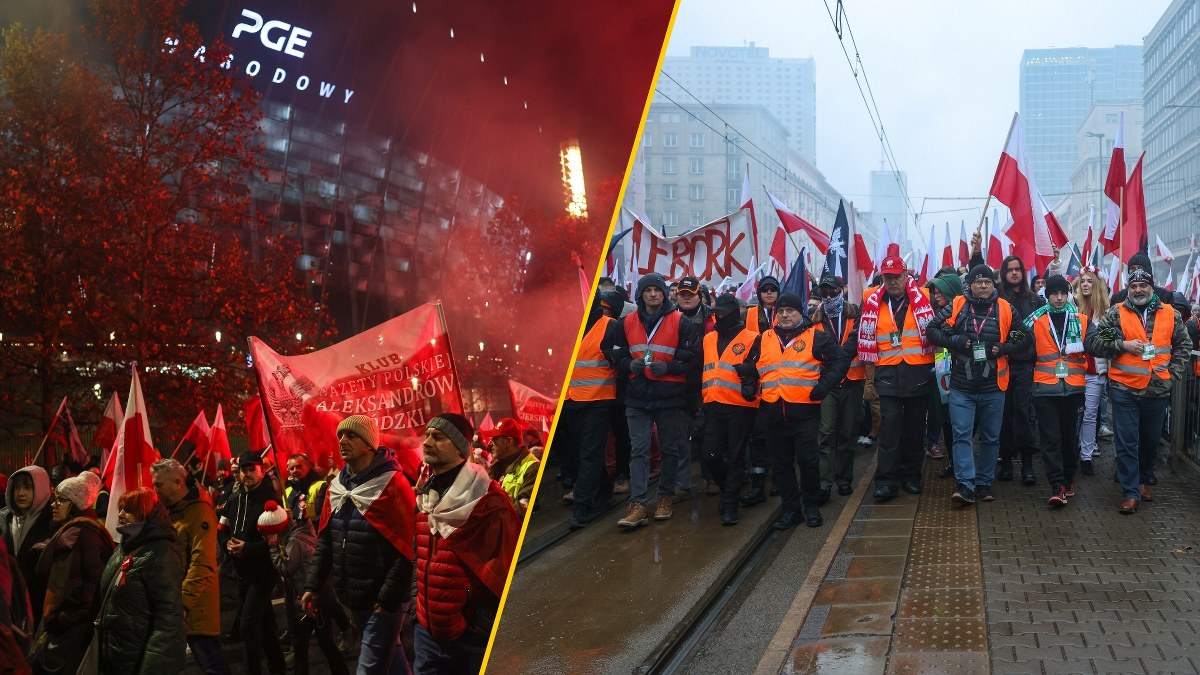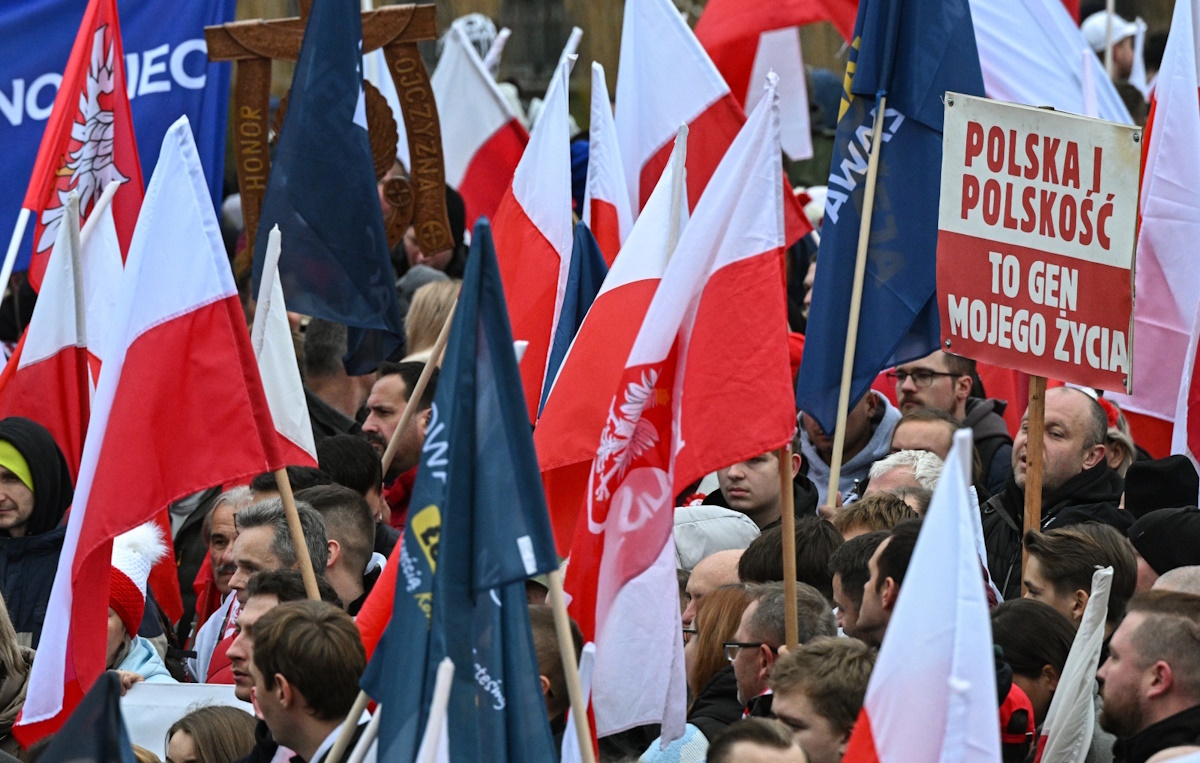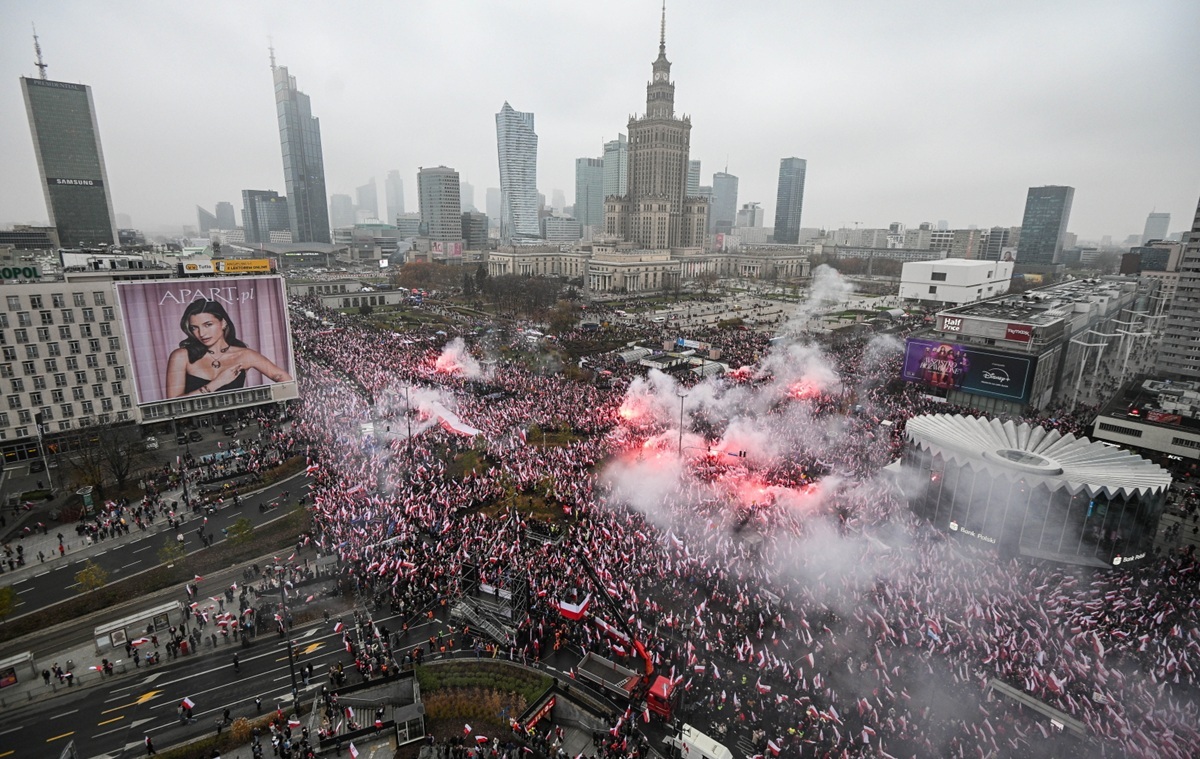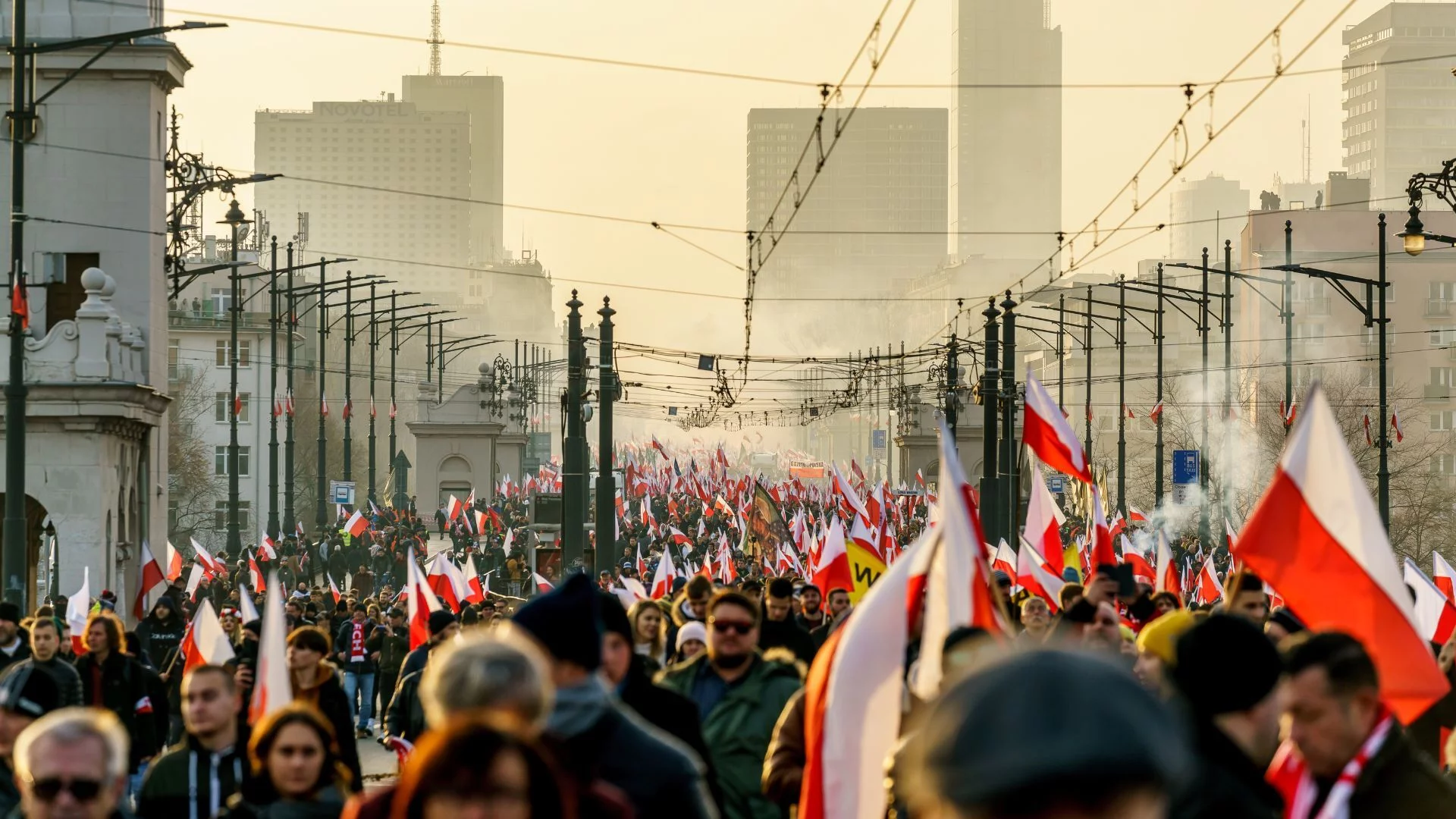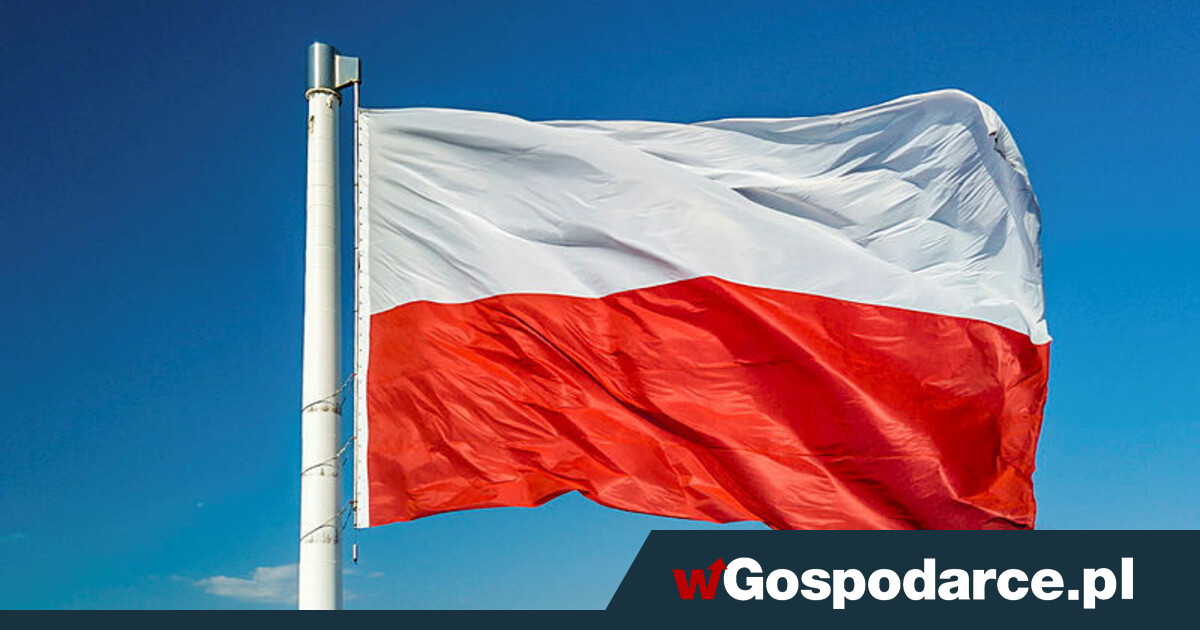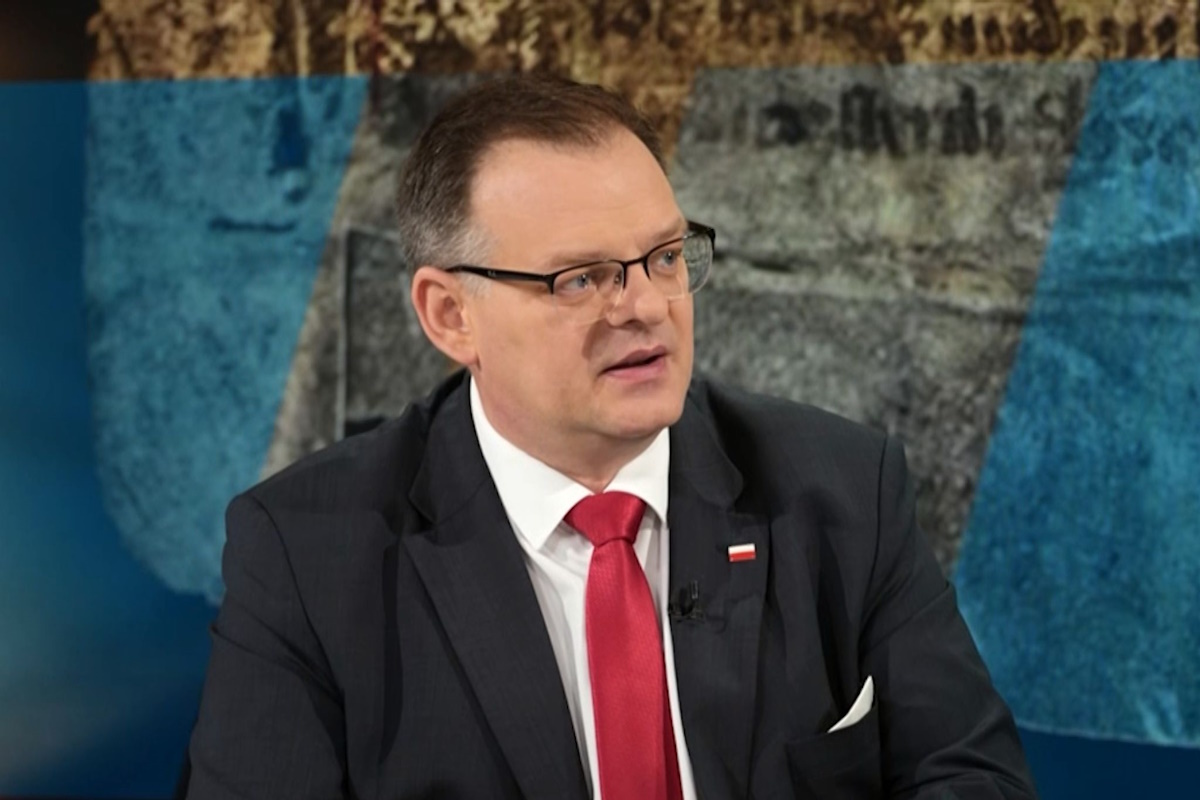I met Lucy Ash, the author of The Baton and the Cross, in July 2023 on a journey to Svyatohirsk Lavra, a mountain monastery in Ukraine’s embattled east. Its shrapnel-ridden white walls overlooking the picturesque Siverskiy Donets river testified to its fresh tragic history. Yet it was an episode from 10 years ago that drew the accomplished reporter to this holy – or alternatively unholy – place.
International journalists have been flocking here since the Ukrainian army wiped out the Russian troops stationed across the river in the autumn of 2022. However, they usually did not even make it through the gates. No wonder, the lavra – as Ash points out in her book – was “the most prominent center of the Russkiy Mir ideology in the Donbas” and a “spiritual power base of the alleged Donetsk clan” (a group of politicians and oligarchs that brought Viktor Yanukovych to prominence). The Russians were stopped short of occupying it after Moscow launched the full-scale invasion of Ukraine, and so the monastery turned into a refuge for people fleeing the war. This predicament did not change the ideological and political sentiments among its monks though. Suffice to say, the lavra’s abbot Metropolitan Arseniy not only had his Ukrainian citizenship revoked by a presidential decree in December 2022 but was arrested in April 2024 for sharing information about army checkpoints with Russians. He is now facing 8 years behind bars.
I was astounded to see that Ash talked the monks into letting us in. She wanted to inquire about the visit Ihor Girkin reportedly paid to the lavra 10 years ago at the onset of the alleged “Russian spring” in the Donbas. The man who credited himself with “pulling the trigger of the war” said that “all his individual bodyguards were the clergy, monks, and hieromonks of the Svyatohirsk Lavra.” He besides had backing from the Russian Oligarch Konstantin Malofeev, whose Tsargrad media group promotes ultra-conservative Christianity and supports Putin. Was the notorious Russian ultranationalist – now jailed by Putin – hosted here as it all started?
After 2 days, the monks figured out that it was better to ask us out. Still, we managed to have a lengthy conversation with Archimandrite Feofan, the monastery’s treasurer and a straightforward substitute for the abbot who was determined to keep his mouth shut. Over a self-grown vegetarian meal reminiscent of the food of Mount Athos, Feofan dismissed the connections between the lavra and Girkin’s militants. Instead, he presented us with any of the beliefs that turned the Moscow Patriarchate-linked Ukrainian Orthodox Church into a public enemy in Ukraine after February 2022.
“Everything happens for a reason and so did this war,” he told us. He then added that “God let the force happen to repair our nation.” The war is simply a “terrible trial,” he said, but it was caused by an “artificial divide” between Ukrainians and Russians and the sins of the Orthodox people specified as abortions, which “kill more Ukrainians than the ongoing war”.
The Svyatohirsk Lavra visit is 1 of the hundreds of puzzles that make up the captivating communicative of The Baton and the Cross, which has the subtitle “Russia’s church from pagan to Putin”. The spiritual conflict in Ukraine – the competition between Ukraine’s 2 main Orthodox churches and Russia’s usage of its church against Ukrainian statehood – is the last chapter of the historical journey into the heart of Russian Orthodoxy Ash guides us through. Ironically, this communicative starts besides in Ukraine: during the baptism of Rus’.
In the first part of The Baton and the Cross, Ash presents a polemic historical survey featuring the likes of Prince Volodymyr, Patriarch Nikon, Peter the Great, Catherine the Great, Rasputin and Vladimir Lenin. She retells the past of Russian Orthodox Church in an insightful and thought-provoking way, focusing on its “astonishing endurance skills” and “uncanny ability to integrate itself with power”. The second part of the book offers a deep dive into the post-Soviet rebirth of the Russian church; the re-emergence of the alliance between the altar and the throne in contemporary Russia; and the ultraconservative turn in Putin’s and his circle’s ideology.
Ash, who started her tenure as the BBC Moscow correspondent back in the 1990s, skilfully blends insightful historical analysis with immersive reporting based on large access and individual years-long connections. Far from one-sidedness or prejudice, she dedicates any of the most interesting parts of her book to affirmative trends within Russian Orthodoxy, specified as the opposition of Orthodox russian dissidents, underground spiritual life in the late russian period, or Common Cause, a grassroots volunteer movement preserving conventional wooden architecture in Karelia and another regions. Her book is besides filled with portraits of what she calls “brave and remarkable individuals” specified as Father Georgy Edelstein, an Orthodox priest of judaic descent who stood up to the russian Union and refused to back church approval of Putin’s invasion of Ukraine. Others include Zoya Krakhmalnikova, a Christian author whose moral authority guided the next generation of Russians opposing authoritarianism and human rights abuses. Nonetheless, Ash’s final word is not something the main characters of her book would appreciate hearing.
The Baton and the Cross reveals a grim image of contemporary Russian Orthodoxy. Its first sin was arguably what historians and theologians call “Sergianism”, a pattern of church servility towards the state. Patriarch Sergius, the de facto head of the Russian Orthodox Church from 1925 to 1943, adopted an ultra-loyalist stance towards the russian authorities, hollowing out the spiritual core of the church. The early Bolsheviks stripped religion of its spiritual content but Stalin, himself a Georgian would-be cleric, successfully turned it into a tool for the control of the population. On a applicable level, this meant that all the high-ranking clerics and church leaders were besides KGB agents.
As the fresh Russian statehood gradually emerged from the chaos of the 1990s, the Russian Orthodox Church followed through and intertwined itself with a corrupt autocracy run by secret policemen and mafiosi. The Byzantine concept of symphonia, harmony between church and state, was rapidly revamped by Russia’s fresh ultra-conservative thinkers. No substance how natural it looks in retrospect, this effect did request determination and work, most of which was accomplished by Patriarch Kirill and president Putin. Ash traces parallels in their biographies and argues that they both evolved from pro-western modernizers to standard-bearers of the Russian world’s revanchist and chauvinist ideology. It took time before they formed an alliance, as there were any disagreements between them. They peaked during the 2011 protests against rigged elections, erstwhile Kirill initially urged the authorities to change course but yet backed down. shortly he described Putin’s regulation as “a miracle of God”. Putin later even said that he believed he was secretly baptized by Kirill’s father in his childhood.
The core prize for Kirill was what Ash describes as a “holy land grab”, a mass-scale overtaking of property and architectural undertakings usually run by the church and corrupt business elites. The revival of Orthodoxy and its alliance with the state was a large business. 1 large example is the bombastic Cathedral of Christ the Saviour, which was built with the enthusiastic support of the then Moscow mayor Yuri Luzhkov in place of the pre-revolutionary cathedral. This building was blown up and turned into a immense open water swimming pool during the russian era. Ash opens her book with a recollection of her visits to the celebrated Bassein Moskva. Another is the nightmarish Main Cathedral of the Russian Armed Forces, where believers can kneel on metallic floors made out of melted-down Nazi trophy weapons and tanks, which Ash describes as “the castle of an evil wizard in a Disney film”.
Over time, Ash argues, the transactional relation between Putin, the church and the FSB became highly effective. “The Church took the place of the Communist organization and provided the ideological framework for Putinism both at home and abroad,” she writes. This active anti-gay, anti-abortion and pro-family propaganda that gradually brought back the conservative and paternalistic “Mother Russia” from its grave. The church canonized Nicholas II and his immediate household in 2000. The celebrated public prosecution of members of the band Pussy Riot, who performed a “punk prayer” in the Cathedral of Christ the Saviour, was a litmus test for the fresh ideological order. “What seemed utmost in the early Putin era had gone mainstream,” Ash points out.
The church backed Kremlins global ambitions. Its leaders managed to integrate the Russian Orthodox Church with the Russian Orthodox Church Outside of Russia, a church created by bishops exiled after the Russian civilian War. They besides laid the ideological foundations for the Russian policy of “protecting Christians in the mediate East,” which justified Moscow’s intervention in Syria. yet came Kirill’s blessing of Russia’s invasion of Ukraine.
The authoritative doctrine of the Russian Orthodox Church expressed in a paper approved by the church at the end of March 2024, which is called “The Present and the Future of the Russian World”, states that Russia is fighting “a Holy War” to save humanity from “the onslaught of globalism and the triumph of the West, which has fallen into Satanism”. These words are reiterated not only by Kirill in his wartime sermons but besides by president Putin and his propagandists specified as Volodymyr Solovyov, who accuses Ukraine’s Zelensky of Satanism on his tv show without blinking an eye.
Is this ideology a function of power or does the power of Russia’s current elite derive from this ideology? Are we at war with an Alexander Dugin-framed, and Ivan Ilyin-inspired, crusade, or is this all just opium for the masses sent into a meatgrinder for the sake of money and status? Ask the FSB agent or the clerk at the Moscow Patriarchate – you will get the same answer.
The Baton and the Cross by Lucy Ash. Icon Books 2024.
Aleksander Palikot is a Kyiv-based reporter and correspondent covering politics, past and culture in Central and east Europe.
Please support New east Europe's crowdfunding campaign. Donate by clicking on the button below.



